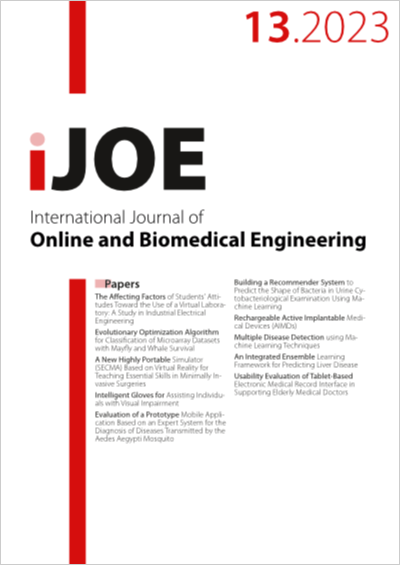Building a Recommender System to Predict the Shape of Bacteria in Urine Cytobacteriological Examination Using Machine Learning
DOI:
https://doi.org/10.3991/ijoe.v19i13.36185Keywords:
Recommender System, Machine Learning, Artificial Intelligence, Urine Cytobacteriological Examination, Random Forest Algorithm, PredictionAbstract
This study aimed to build a recommender system that predicts the shape of bacteria for biological requests of urine cytobacteriological examination (UCBE) using machine learning techniques, to reduce the time taken to identify the shape of bacteria (Cocci or Bacilli). We used different methods and techniques in the process: Unified Modelling Language (UML) was used for digital design architecture, Rstudio tool with R programming language for system development, and Random Forest (RF) algorithm for the prediction. Experimental results showed that the time needed to identify the shape of bacteria is decreased, and bacilli bacteria are better recognized by the algorithm with an error rate of 3%. In addition to that, the proposed recommender system allows biologists to validate and correct the prediction and improve the accuracy of the classification algorithm used in the future.
Downloads
Published
How to Cite
Issue
Section
License
Copyright (c) 2023 Mohammed Amine Lafraxo, Hinde Hami , Tarik Merrakchi, Ali Azghar, Ahmed Remaida, Mohammed Ouadoud, Adil Maleb, Abdelmajid Soulaymani

This work is licensed under a Creative Commons Attribution 4.0 International License.


